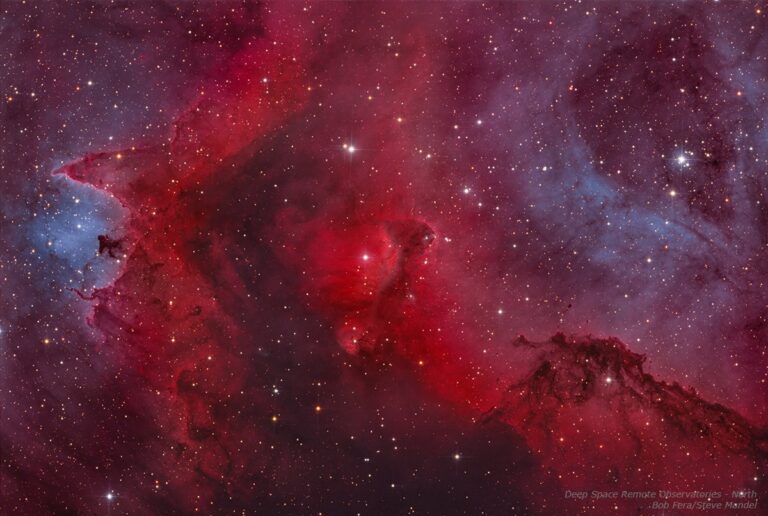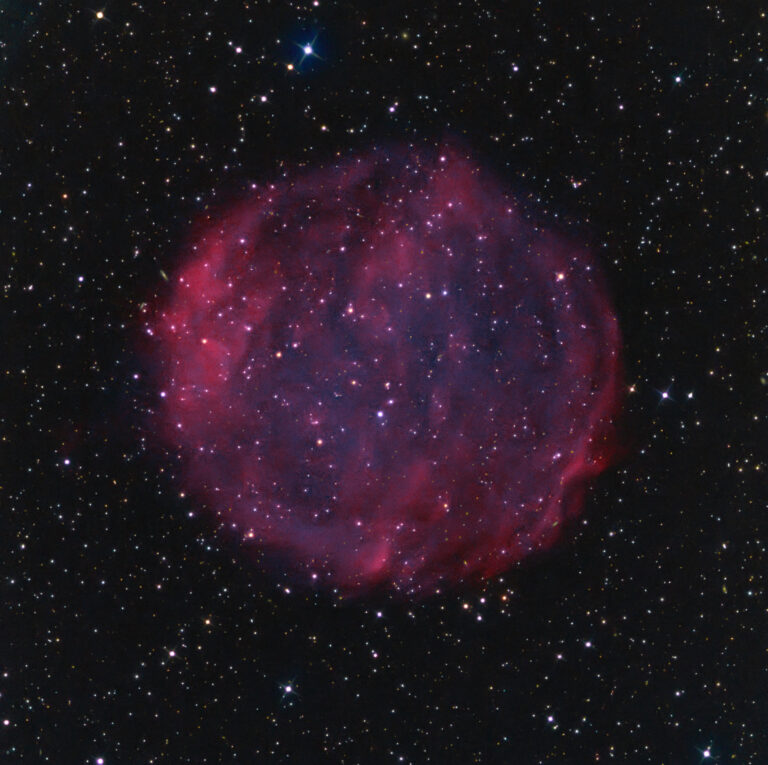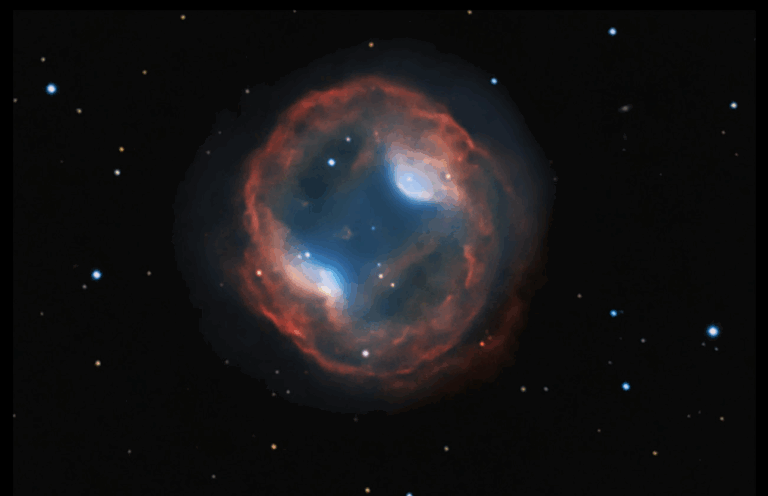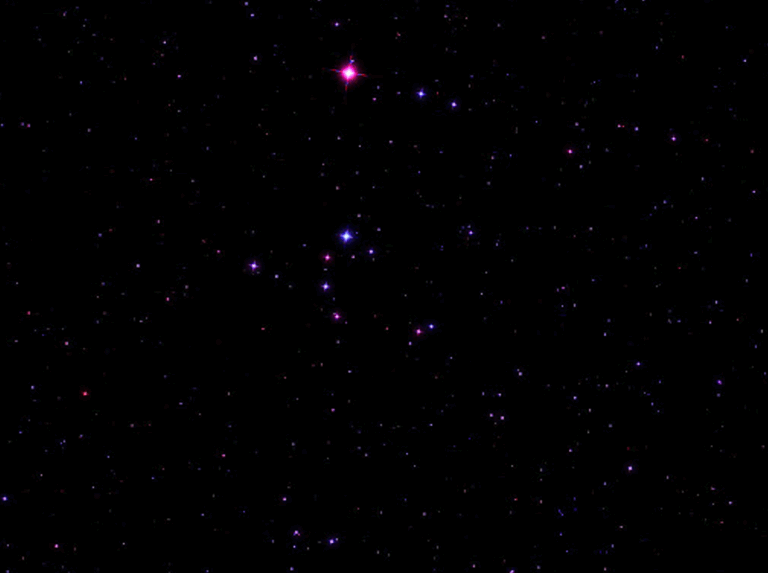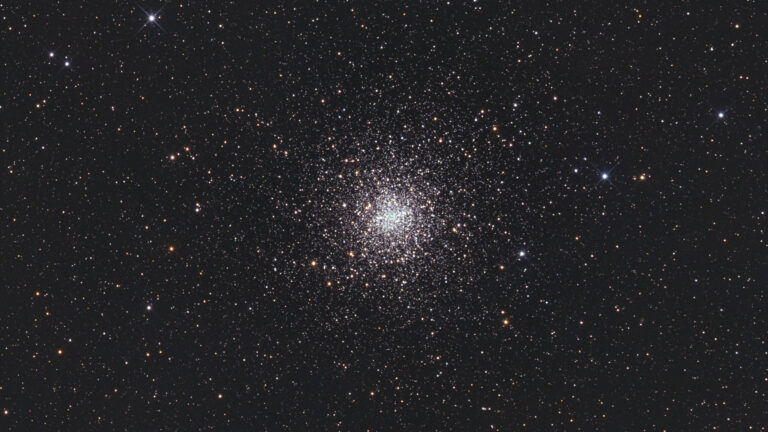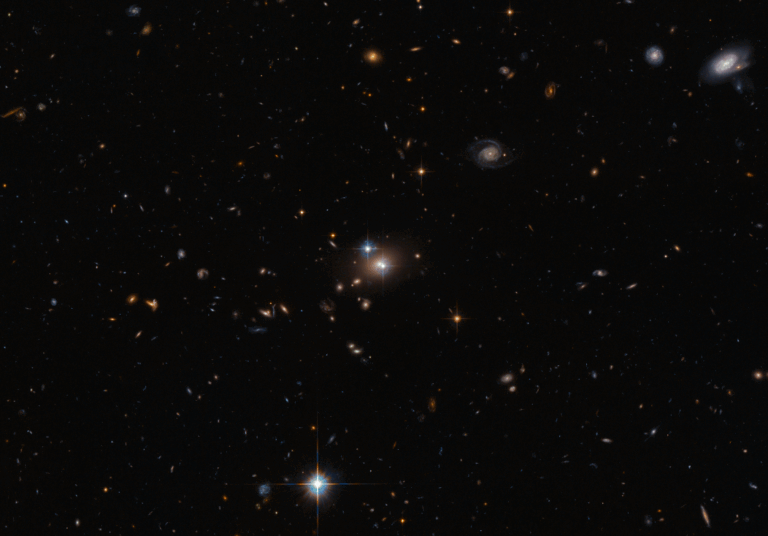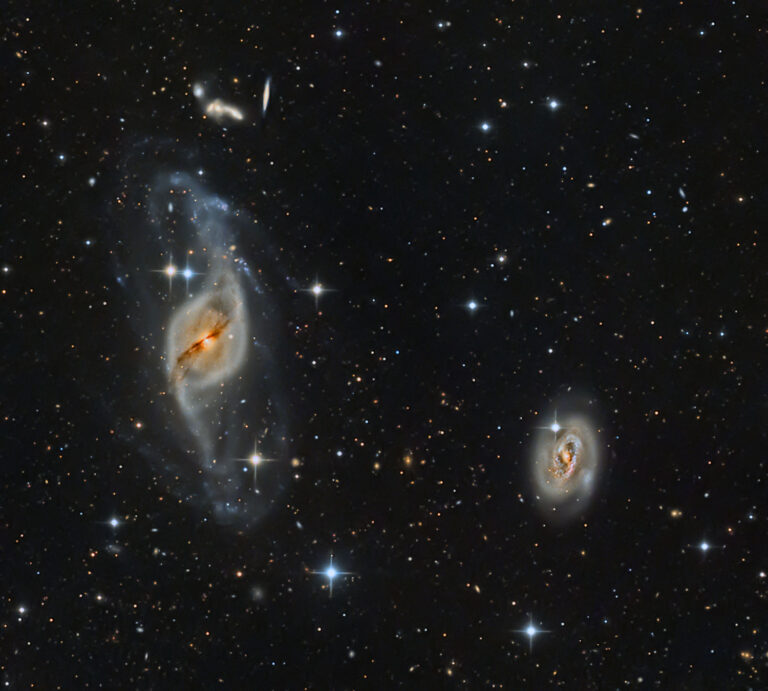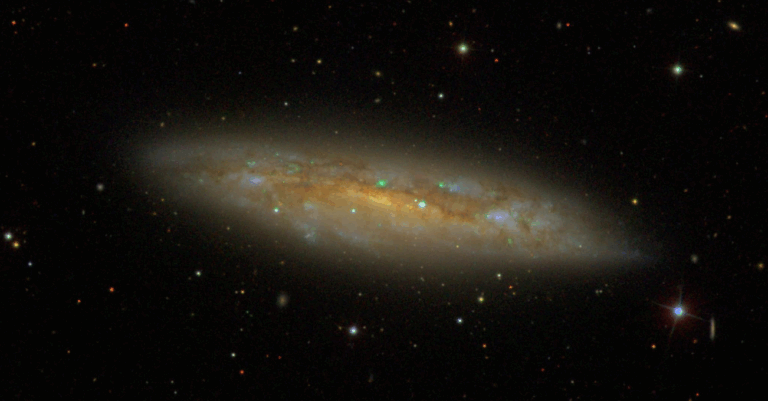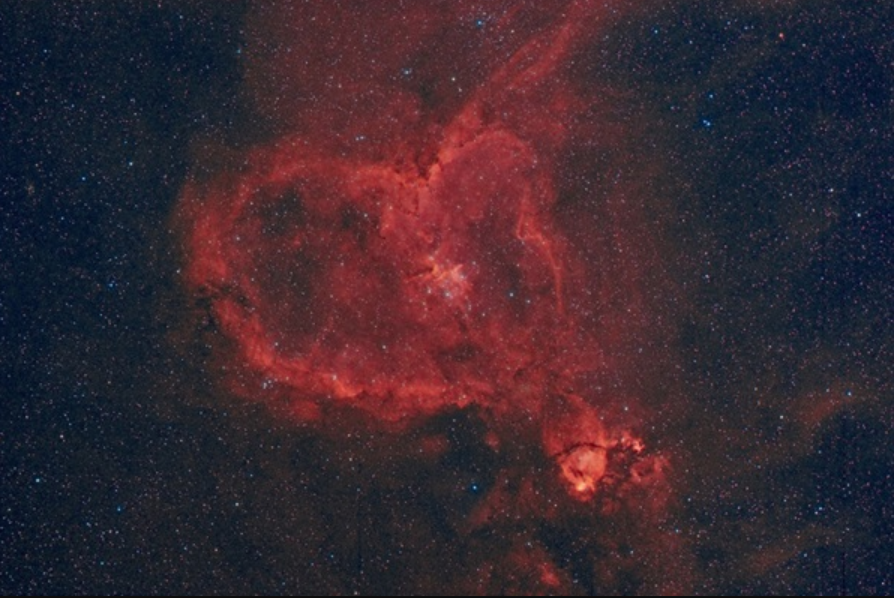
Key Takeaways:
- The Heart Nebula (IC 1805) is a large star-forming region.
- It contains a young star cluster (Melotte 15).
- The nebula is about 7,500 light-years away and over 300 light-years across.
- Viewing requires a dark sky and a larger telescope.
One of the most interesting areas to explore with a wide-field scope exists in the rich Milky Way of Cassiopeia. You might think of Orion, Taurus, Scorpius, or Sagittarius. But Cassiopeia is loaded with small, interesting deep-sky objects, mostly clusters and nebulae, and has a few big nebulae too. One of them is IC 1805, commonly called the Heart Nebula due to its distinctive shape. The catalog designation refers to the open cluster that lies embedded within the nebulosity, which covers a very large area and lies adjacent to the neighboring bright nebula, the Soul Nebula, IC 1848. (More on the Soul Nebula later.) The open cluster here also carries the designations Melotte 15 and Collinder 26.
The Heart Nebula is a large emission region, slowly transforming mostly hydrogen and other gases into a new generation of stars — thus the young open cluster within it. The nebula is also catalogued as Sharpless 2–190, and is sometimes called the Running Dog Nebula. It lies at a distance of about 7,500 light-years, and has a reasonably low surface brightness. It’s pretty easy to photograph with a long-exposure rig, but harder to see visually. A wide field and a very dark sky is required, and a scope of 8-inches or larger aperture helps.
This is a large object: The Heart Nebula covers about 150’ across, more than two degrees from end to end. The physical diameter of the nebula exceeds 300 light-years. Just imagine what it would be like to explore such a star-forming region close up!

